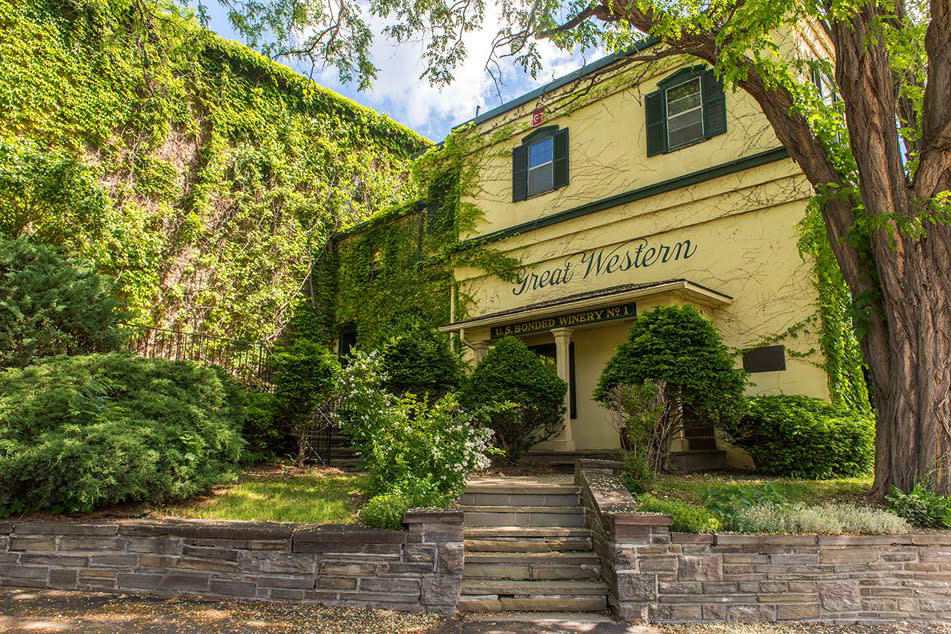
Geography influences nearly every wine-buying decision we make. This is especially true for wine shoppers on the West Coast who are hampered by geography when they try to buy wine from the Finger Lakes region of New York state.
Easterners don't have the same problem. California wine is readily available in most markets in the east and mid-west. Less so, perhaps, for Pacific Northwest wines.
So, perhaps some information on the Finger Lakes and what wines to look for might generate interest in this historic New York wine region, among Left Coast wine drinkers.
Thousands of years ago, glaciers formed a series of 11 lakes in central New York state that became known as the Finger Lakes for their long narrow shapes. The most prominent are Seneca Lake, Cayuga Lake and Keuka Lake. In 1982, the Finger Lakes wine region was given an AVA, followed by sub-AVAs for Cayuga Lake and Seneca Lake.
According to the Finger Lakes Wine Alliance (FLWA) there are 130 wineries along the Finger Lakes, making a variety of wines from native, hybrid and European vinifera grapes. Riesling, the second most widely planted grape in the lake region, is presently made by 200 Finger Lakes wineries.
Today, Riesling and other vinifera grapes, are more common in Finger Lakes vineyards. The FLWA says these are the top-10 grapes in Finger Lakes vineyards: Concord, Riesling, Catawba, Niagara, Aurore, Elvira, Chardonnay, Cayuga White, Cabernet Franc and Baco Noir. (Vinifera grapes are in bold)
At one time, the town of Hammondsport, on Keuka Lake, was considered the wine capitol of the region, partly because it was the site of historic Taylor Winery and Pleasant Valley Wine Company.
Both companies became known for their sparkling wines (then called "champagne"), made from native grapes. So close was the association with the Champagne region of France, that the rail stop, near the Pleasant Valley Wine Company, was named Rheims, after the famous city in Champagne.
According to Leon Adams, in his book, "The Wines of America," in the late 19th century, the proprietors of the Pleasant Valley Wine Company, presented a sparkling wine, made from Delaware and Catawba grapes, at a meeting of the local growers association, prompting one attendee to proclaim, "Truly, this will be the great champagne of the West!" Although the remark was meant to refer to the continent "west" of Europe, it gave Great Western sparkling wine its name, and eventually the New York bubbly went on to win awards in Paris and London.
It must have been a shocking experience for those European tasters. Eastern grapes, especially Vitis labrusca, but also some hybrids, have what is pejoratively described as a "foxy" character. Baco Noir and other red hybrids can smell and taste "foxy," while the Seyvals usually are free of that character.
A foxy smell is organic and wild, like animal fur. Curiously, some compare the foxy scent to that of wild strawberry, or fraise des bois, an aroma most people find pleasant.
Wine drinkers, familiar with the smell and taste of vinifera wines, find wine made from Vitis labrusca and Vitis riparia grapes
alien, even off-putting. It's a major reason eastern wines are scarce
and a hard sell in the west. And it took years for growers
in the Finger Lakes, and other states east of the Mississippi, to learn
how to bring vinifera grapes through the harder New York winters
An
aside. On my first wine trip to the Finger Lakes, my photographer and I
visited a few wineries that were pouring mostly hybrid wines,
including Baco Noir and Seyval Blanc. Coming from California, I was used to drinking vinifera wine, like Pinot Noir and Sauvignon Blanc so, the eastern wines were, at the very least, unusual.
But something we noticed, in the tasting rooms we visited, was even more unusual. At Great Western, the tasting room staff had Concord grape juice for the visiting children. While the adults were offered samples of hybrid wines and Riesling, the staff understood that to keep dad and mom concentrating on the wines, they had to distract their child from demanding the parent's attention.
We saw this sensible and impressive marketing idea at other Finger Lakes wineries, and I wondered why this simple tool was not being used in California.
Besides Riesling, Finger Lakes vineyards have other vinifera grapes, like Chardonnay, Cabernet Franc. And interest in hybrid grapes continues, the most common being American Hybrids (Isabella, Noah) and French Hybrids (Seyvel Blanc, Villard Noir). Hybrids had a growth spurt in the 1990s and continue to be popular with many wine drinkers, where the wines are sold. And, there still is a demand for native wines like Cayuga White, Catawba, Niagara and Concord, noted for their "foxy" character.
Search your local wine shops for hybrid and native wines from the Finger Lakes, or ask your wine merchant to order them.
Correction:
In the June 28 post on Australian Cabernet Sauvignon, I had a lapse of
memory. I've been to Western Australia and should have remembered that
Perth, the capital city of WA, is closer to Margaret River than
Adelaide, days away to the east, across the Nullarbor Plain. My thanks to Robin Shaw for pointing out the error
and my apologies to the residents of Western Australia for my faulty geography.
Next post: French or American Oak Part 2
Leave a comment at boydvino707@gmail.com



No comments:
Post a Comment
Note: Only a member of this blog may post a comment.